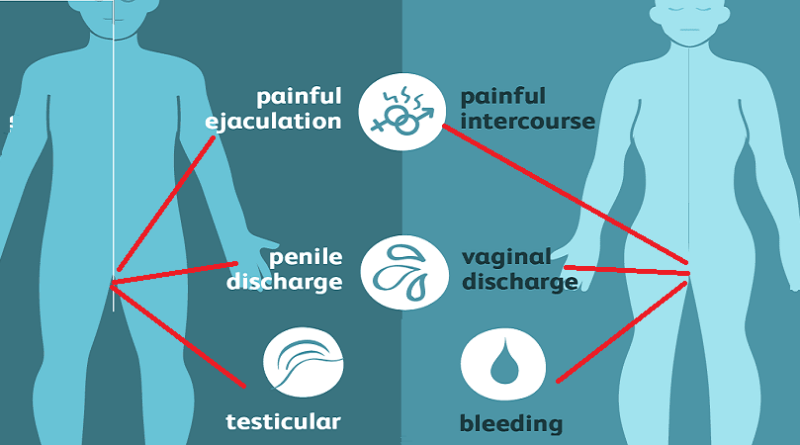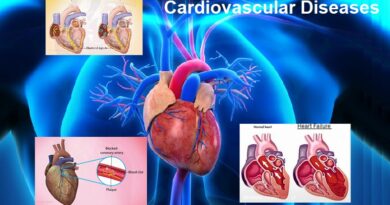Chlamydia Infection, the most common of STDs
Chlamydia is one of the most common STDs. It’s caused by a bacterium called Chlamydia trachomatis, which can be transmitted through sex, (vaginal, anal, or oral sex). In fact, according to the Centers for Disease Control and Prevention (CDC), most people who have chlamydia don’t know they have it because they don’t experience symptoms.
About Chlamydia Infection
- A sexually transmitted infection caused by bacteria (Chlamydia trachomatis).
- Common symptoms are cervicitis, urethritis, and proctitis. But most of the cases show no symptoms.
Most people with the infection have no symptoms and do not seek testing.
Approximately 70% of women, and 93% of men experience no symptoms. - It is Treatable by antibacterial.
After treatment you can be infected again, as there no post infection immunity like in gonorrhea infection. - Diagnosis usually requires lab test.
- The disease can last several days or weeks.
- It is transmitted through sexual contact.
- Age: Common ins 18-35 years old persons (Two-thirds of new chlamydial infections).
Transmission of Chlamydia
- It can be transmitted through sex, (vaginal, anal, or oral sex).
- Can be from infected mother to her baby causing cause ophthalmia neonatorum (conjunctivitis) or pneumonia.
Symptoms of chlamydia Infection
Usually no symptoms, but – if ever – symptoms can become visible in 2 to 3 weeks after sexual contact. Most people with the infection have no symptoms and do not seek testing. Approximately 70% of women, and 93% of men experience no symptoms. Absence of symptoms does not mean the person is free of infection, nor he is safe!
- Common symptoms for both men and women include burning urination and frequency (pain, discomfort, or burning that can be felt when urinating), discharge (Vaginal discharge/penile discharge) and pain around genitals.
- Rectal pain, discharge, or bleeding, due to infection during anal sex.
- Sore throat: a rare symptom due to oral sex infection.
- Symptoms usually appear 2-4 weeks after exposure to infection. Infection can exist for months or years before it is detected, during that time the person can transmit infection to others.
Symptoms of chlamydia in males include:
- Burning urination:
- Discharge from the tip of the penis that is watery or white/clear, sometimes with a yellow color to it
- Pain: in the testicles (that can be felt on both sides).
Redness, tenderness, swelling, or itchiness around the opening of the penis.
Painful ejaculation.
Symptoms of chlamydia in females include:
- Discharge: Yellow-greenish vaginal discharge.
- Pain: in pelvic area or lower abdomen between periods.
Pain during intercourse.
Pain in the vulva (outer part of the genitals) or vagina. - Bleeding: between periods or painful intercourse, due to inflammation of the cervix.
- General Symptoms: Abdominal swelling; fever, nausea and vomiting.
- Complications include the following:
– Pelvic inflammatory disease (PID): About 10%–15% of infected women will develop PID, if the infection was not treated.
– Tubal factor infertility, due to scarring of the fallopian tubes.
– Ectopic pregnancy, where fertilized egg implants in a fallopian tube instead of the uterus. This ectopic pregnancy can be a life-threatening condition.
– Chronic pelvic pain.
Rare Symptoms of Chlamydia Infection
- Sore throat: Due to infection during oral sex.
- Right upper abdominal pain (perihepatitis): This is inflammation of the capsule of the liver, (Fitz-Hugh-Curtis syndrome).
- Joint pain (Arthritis): It’s due to a post-inflammatory process, due to bod immune response.
Chlamydia and HIV?
Untreated chlamydia infection may increase the chances of getting HIV infection.
Diagnosis of Chlamydia Infection
- Pathological examination can be used to diagnose the infection.
- Swabs taken from the cervix or tip of urethra where the bacteria are identified.
Swab from the throat or rectum may also show the presence of the bacteria. - Urine examination is also helpful. In some cases.
Treatment
As the infection is caused by bacteria, it usually responds well to a course of antibiotics. Normally Azithromycin once a day or Doxycycline twice a day, are prescribed for a week. In case of severe infection, intravenous administration of antibiotics may be required. It is advised that even if one of the sexual partners exhibits symptoms of the infection, both of them should complete the antibiotic course. Otherwise, there is scope of repeated infection.
SOURCES:
- Detailed STD Facts – (cdc.gov)
- verywellhealth.com




